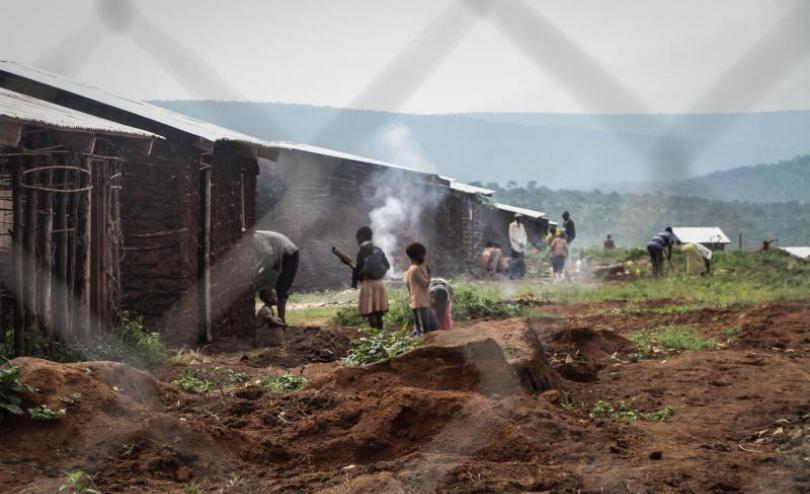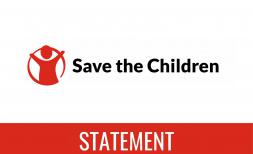East and Southern African countries cut under-5 child deaths by 57% since 2000

Progress led by Rwanda, Malawi and Uganda, although under-5 mortality rate remains high across the region.
The likelihood of a child dying before their 5th birthday in East and Southern Africa has reduced by 57% since the year 2000, new research by Save the Children reveals today. Government policies and development investment, including in insecticide-treated bed nets, immunization campaigns, dietary supplements, and programs to encourage breastfeeding, have all contributed to this dramatic improvement.
Launched today, Save the Children’s 2019 Global Childhood Report evaluates 176 countries across the globe on their ability to protect children ‘childhood enders’ – life-changing events like child marriage, early pregnancy, exclusion from education, sickness, malnutrition and violent deaths.
The report includes the annual End of Childhood Index, which finds that circumstances for children have significantly improved in over 70% of the 24 countries in the East and Southern Africa since 2000. Regional highlights include:
- Rwanda, the biggest improver in the region and the second-biggest in the world, with the country reducing under-5 mortality by 79 percent over 20 years. Many more children are in school and many fewer children are married before age 18, with the out-of-school rate and child marriage rate both down by 60 percent. Rwanda also cut child labor, adolescent births and child homicides in half since 2000.
- Ethiopia, the second-biggest mover in the region and third-biggest in the world. Improvements in child survival and education have driven progress, along with reductions in malnutrition and child marriage. Child mortality, children out of school and child marriage have all been cut by about half or more. The adolescent birth rate is down 41 percent, stunting is down 33 percent, and child homicide is down 30 percent over the past 20 years.
- Four countries in East and Southern Africa – Rwanda, Ethiopia, Angola and Zambia – increased their index scores by 200 points, representing substantial improvements for children over the past 20 years.
While substantial progress has been made, the under-5 mortality rate remains high overall in the region, with 59 deaths per 1,000 live births. The highest rate in the world is in Somalia, with one child in eight dying before their 5th birthday. South Sudan also remained in the global top ten for under-5 mortality.
Regionally, Mauritius tops the overall rankings as the country that best protects and provides for its children, with Seychelles, Botswana, South Africa and Namibia rounding out the top five in East and Southern Africa. Globally, Singapore came out on top, with eight Western European countries and South Korea also ranking in the global top 10.
The worst-performing countries in the region are Angola, Lesotho, Mozambique, Somalia and South Sudan - all of which place in the bottom 15 globally.
Globally, the report found at least 280 million children have a better chance to grow up healthy, educated and safe than at any time in the past two decades. In the year 2000, an estimated 970 million children were robbed of their childhoods due to ‘childhood enders’. That number today has been reduced to 690 million – meaning that at least 280 million children are better off today than they would have been two decades ago. Together, China and India account for more than half of the global decline in stunting alone.
Of the eight ‘childhood enders’ examined in the report, displacement due to conflict is the only one on the rise globally, with 30.5 million more forcibly displaced people now than there were in 2000, an 80 percent increase.
Forget is a mother of four living in northern Malawi. For most of her life she didn’t know what to feed her children to keep them healthy, so they often suffered diarrhoea and were malnourished. Now, after taking part in a community nutrition program run by Save the Children, Forget has learnt how to feed her children home-grown produce, and how to keep them clean and healthy.
“This village was lagging behind in its knowledge of good nutrition practices. We had chickens, yet eggs were a no-go zone for children due to traditional myths and beliefs that barred children from eating eggs for fear of not growing hairs on their heads, and no eggs for pregnant women or else they would give birth to a hairless child.
“In this village, life has changed. We now eat the six food groups and we have healthier bodies; our children don't get ill often, they look healthier.
“In the past [our village] was a diarrhoea prone area due to lack of hygiene but now we are a model village due to the Scaling Up Nutrition Project interventions. Exclusive breast feeding, hygiene and nutrition lessons have made a difference to our health and there is no stunting.”
Ian Vale, Save the Children’s Region Regional Director for East and Southern Africa, said:
“These results show there is reason to hope. Even in some of the poorest countries in the world we see examples of extraordinary progress. I’ve spoken to mothers in Rwanda, survivors of a devastating conflict, who tell me that their children are so much healthier now than they were a decade ago. We are seeing a clear demonstration that, when the right steps are taken, development works”.
“Across East and Southern Africa we have seen governments improving health systems, investing in education, strengthening legal frameworks, and empowering teenagers to make life choices that set them on a path to realize their full potential”.
“Of course, these results need to be viewed within a wider picture. Children in East and Southern Africa continue to be some of the most disadvantaged globally. However, with the situation for children globally improving year by year, it’s heartening to know that children in this region are not being left behind.”
NOTES TO EDITORS
- Today, nearly 31 million children have been forcibly displaced from their homes. Millions more – an estimated 420 million children in total – are living in conflict zones, more than double the number in 1995. Conflict-affected countries have the highest child mortality rates, a disproportionate number of the world's stunted children and a rising share of out-of-school children globally. Rates of child marriage and child labor are also increasing in many of these contexts (e.g., Syria, Yemen). For more, see pages 35-39 in Save the Children's Global Childhood Report.
- In the year 2000, an estimated 970 million children had been robbed of their childhoods due to “childhood enders” – life-changing events like child marriage, early pregnancy, exclusion from education, sickness, malnutrition and violent death. That number today has been reduced to 690 million. One-fifth of these children have died. The rest – 545 million - are alive and missing out on childhood. This is 24 percent or 1 in 4 of the 2.3 billion children under the age of 18 worldwide. To reach this number, a series of reasonable assumptions were made based on evidence of overlap between groups of children who have experienced one or more childhood ender events. It includes: 152 million stunted children under age 5, an estimated 30 million children age 5 who are stunted, 262 million children aged 6-17 who are out of school and a subset of child laborers (86 million) and forcibly displaced children (16 million) who are not likely to be stunted or out of school. The reference year for this analysis is 2017.
For details, see Methodology and Research Notes in Save the Children’s Global Childhood Report.
- In East and Southern Africa, the vast majority of countries significantly improved their scores between 2000 and 2019. Over seventy percent of countries in the region (17 of 24) increased their scores by over 100 points. And four countries (Rwanda, Ethiopia, Angola and Zambia) had 200-point increases. More details on the regional countries and their scores available below. Further detail is available in the Global Childhood Report.




